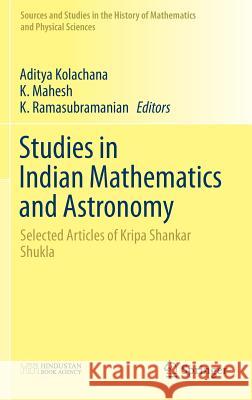Studies in Indian Mathematics and Astronomy: Selected Articles of Kripa Shankar Shukla » książka
topmenu
Studies in Indian Mathematics and Astronomy: Selected Articles of Kripa Shankar Shukla
ISBN-13: 9789811373251 / Angielski / Twarda / 2019 / 742 str.
Studies in Indian Mathematics and Astronomy: Selected Articles of Kripa Shankar Shukla
ISBN-13: 9789811373251 / Angielski / Twarda / 2019 / 742 str.
cena 685,93
(netto: 653,27 VAT: 5%)
Najniższa cena z 30 dni: 616,85
(netto: 653,27 VAT: 5%)
Najniższa cena z 30 dni: 616,85
Termin realizacji zamówienia:
ok. 22 dni roboczych.
ok. 22 dni roboczych.
Darmowa dostawa!
Kategorie:
Kategorie BISAC:
Wydawca:
Springer
Seria wydawnicza:
Język:
Angielski
ISBN-13:
9789811373251
Rok wydania:
2019
Wydanie:
2019
Ilość stron:
742
Waga:
1.23 kg
Wymiary:
23.39 x 15.6 x 4.14
Oprawa:
Twarda
Wolumenów:
01
Dodatkowe informacje:
Wydanie ilustrowane











